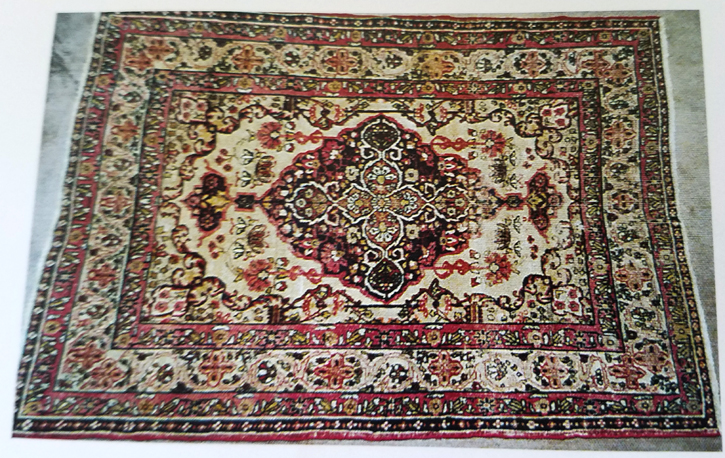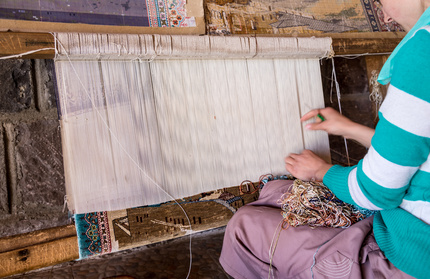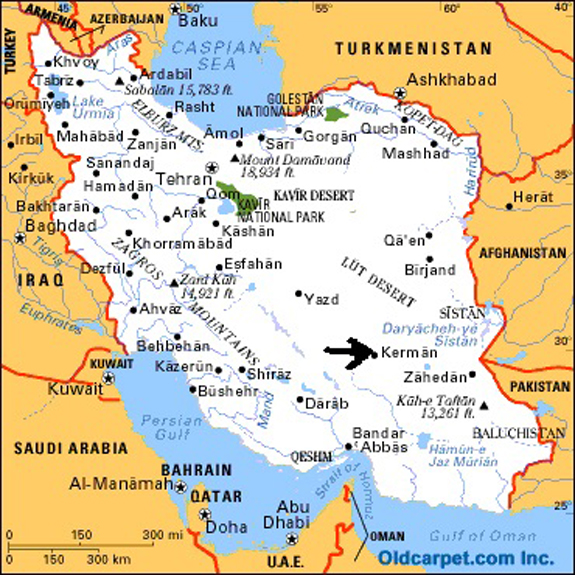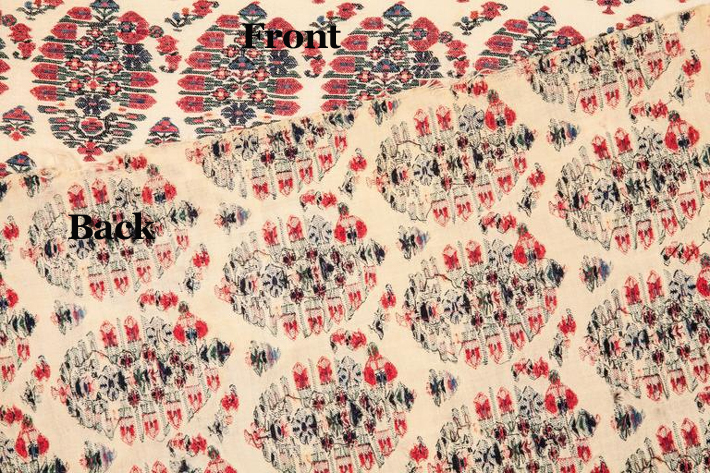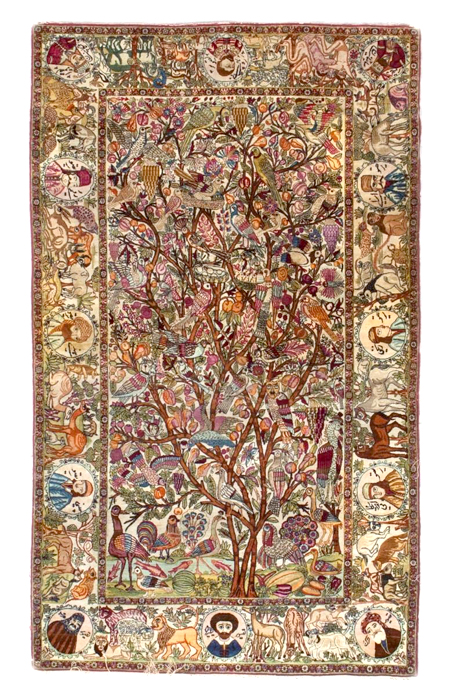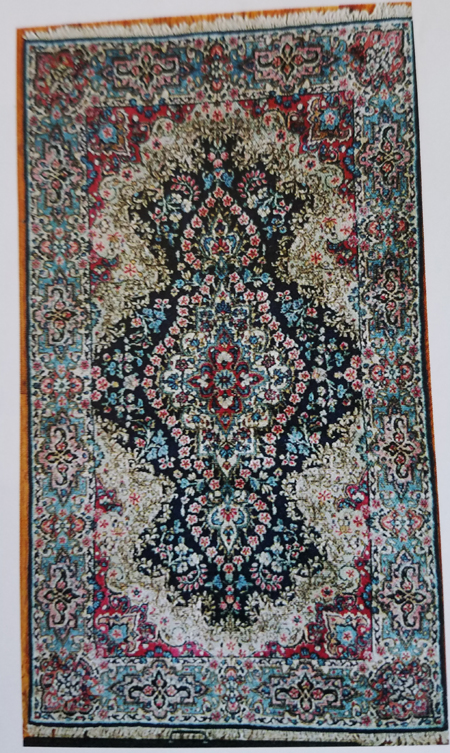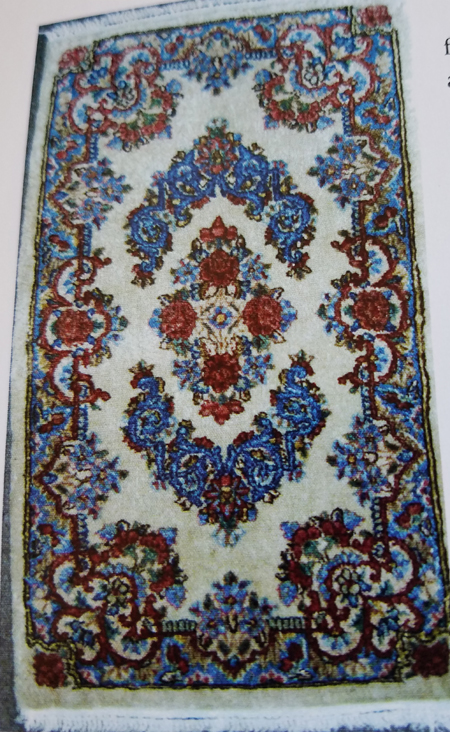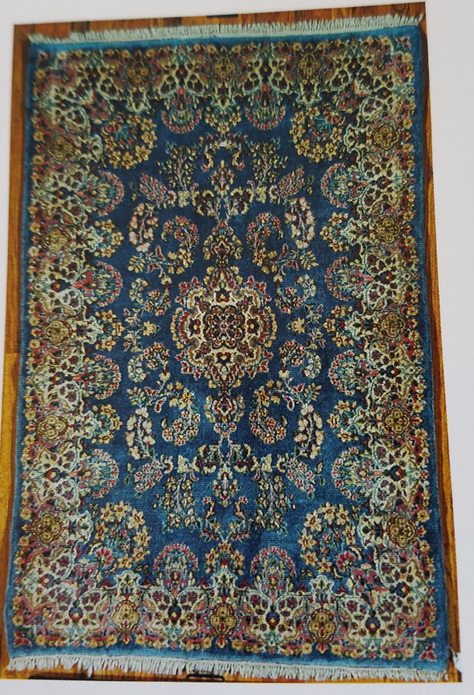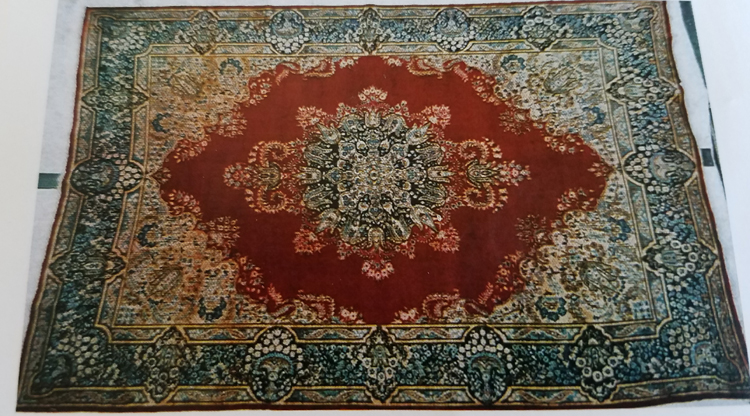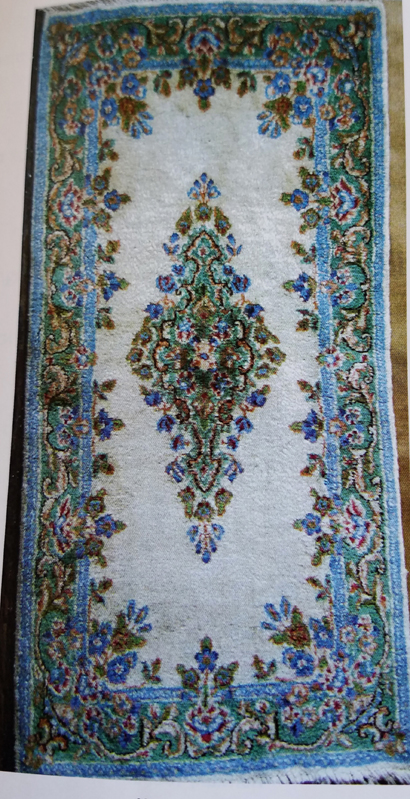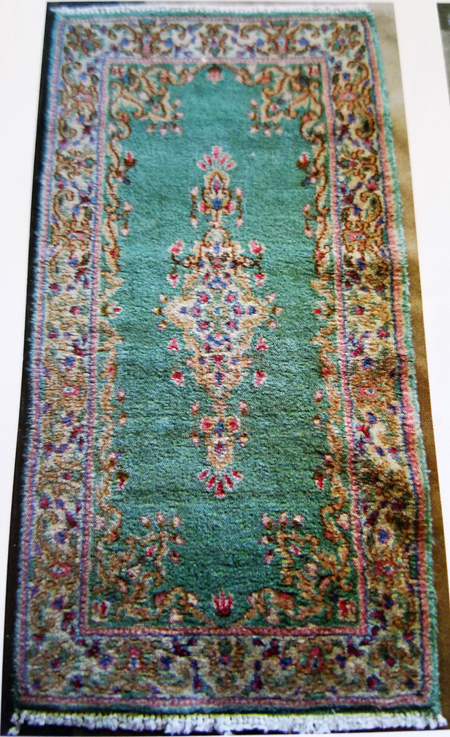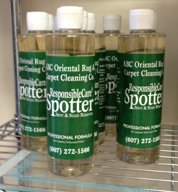THE KERMAN ORIENTAL RUG
The traditional Kerman Oriental rug, as with most other oriental rugs, please pay attention to the following CAVEATS:
- The way to accurately identify a handwoven oriental rug is not just from the design, but from the way it is woven and the materials used.
- Many countries produce rugs with designs that may copy another country’s rug.
- Because of the individual nature of hand-woven rugs, we can study the most common examples (and there will be variations!) but we must be aware there are many exceptions to every example and the terms 'always' and 'never' cannot be used when it comes to the study of oriental rugs and their designs.
The Kerman Oriental rug (Kirman), like the Sarouk Oriental rug, is an example of a Persian city rug. City rugs are woven in large factory type environments or workshops on permanent vertical looms, producing rugs in many different sizes with designs and colors palettes that are similar. The usual design of these rugs is curvilinear with floral patterns.
LOCATION OF KERMAN
Kerman is a city as well as a province located in SE Iran. It was founded in the 4th century and was an important stop for those traveling along the trading routes between Iran and India. It is accessible from the Persian Gulf and Oman Sea ports by train and highway and is the last city between Iran and India.
BRIEF HISTORY OF KERMAN WEAVING
Since the early 1500s, the Kerman area has been a center of workshop weaving. The arts thrived in the area because the province was relatively isolated with little interference from invasions. The dry climate with little rain also attributed to the predominance of the arts over agriculture.
The area was well-known for paisley hand-woven shawls in the 19th century until the decline of the shawl industry brought about the reintroduction of commercial rug production around 1890. The Kerman weavers, who had perfected the paisley or boteh motif in their shawls, found they could easily adapt to the curvilinear floral designs dictated by the commercial rug industry’s demands.
TRADITIONAL KERMAN ORIENTAL RUG DESIGNS
There is a wide range of recognizable Kerman designs, as the weavers not only wove for Western buyers but for local consumers as well. Examples include:
- Center medallion
- All-over boteh, florals, and stripes
- Garden panel
- Tree-of-life
- Prayer
- Vase
- Hunting scenes and elaborate pictorials
- French Aubusson/Savonnerie
THREE PHASES OF KERMAN ORIENTAL RUG DESIGN
The designs and corresponding colors can be broken into three phases:
1. 1890-1920
Rugs of this phase usually had a center medallion, an all-over boteh, a pictorial with cypress trees and figural motifs such as stylized branches, birds and animals, vegetable gardens, and hunting scenes (especially in the early 20th century) or were incorporated into a prayer rug. Those with the central medallion usually had wide borders filled with flowers.
The main colors were deep red, indigo blue, forest green,
and golden tan.
2. 1920-1950
This phase put an emphasis on the floral motif with detached floral sprays introduced during the late second quarter of the century.
Field colors were mostly ivory with jewel tones of ruby red, emerald green, and sapphire blue.
3. 1950-Present
Broken borders or borders that extend into the field of the rugs (or the field into the borders of the rug) were introduced. French floral rugs (Aubusson and Savonnerie) also influenced the modern design.
American buyers prefer the modern rugs to have plain open fields, a center medallion, and broken borders.
Pastel colors of green, rose, blue, and ivory are more common in the modern rugs as well.
CONSTRUCTION CHARACTERISTICS OF THE KERMAN ORIENTAL RUG
FOUNDATION
The warps (up and down cords) and wefts (side to side cords) are cotton.
KNOT
The Kerman Oriental rug uses an asymmetrical Persian knot, opening to the left.
PILE
The pile is high quality Carmania wool.
ENDS
Both ends will have knotted fringes.
SIDES
The sides are wrapped with a single wool cord.
DYES
The Kerman weavers use the technique of dyeing the wool before it is spun, resulting in more uniformity of color.
Cochineal, a dye derived from an insect, is a red color with a bluish or purplish hue. In Persian rugs it is found only in Kermans and Meshads, and occasionally in Afshars.
THE KERMAN ORIENTAL RUG
OF TODAY
In the early 20th century the oriental rugs from Kerman were considered to be one of the finest of all Persian rugs. Approximately 80% of the rugs produced in the Kerman area were exported to America.
Kerman rugs are still being produced in Iran today. Though they may not be as fine nor as elaborate or richly colorful as their antique counterparts, the design is still popular, and the rugs are still sought after in the marketplace.
NOTE: Most photos courtesy of Ellen Amirkan, http://www.dallasrugcleaner.com
"The Cleanest Clean You've Ever Seen."
by
ABC Oriental Rug & Carpet Cleaning Co.
130 Cecil Malone Drive Ithaca, NY 14850
607-272-1566

ABC
Carpet & Rug
Spotting Guide
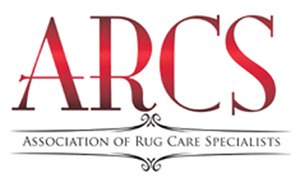
ABC Oriental Rug & Carpet Cleaning Co.
is a FOUNDING MEMBER of the
Association
of Rug Care Specialists.
"To Teach, Cultivate and Advance the Art and Science
of Rug Care"
ABC
Carpet & Rug
Spotting Guide
Learn how to remove spots with ordinary household solutions
Sign up below to gain access to your complementary Spotting Guide from ABC.
Registering your email address guarantees you will be notified whenever discount savings coupons become available.
Did you know that our ABC Responsible Care Spotter can get those pesky spots out of your carpet and rugs and will work equally as well on your clothes and upholstery?
Stop by our office and pick one up. They are $5.00 + Tax but if you have carpets or upholstery cleaned in your home or business, just request a free one from your Technician.
And don't forget to fill out the form above to download your free ABC Spotting Guide!

ABC
Carpet & Rug
Spotting Guide
GIVE THE
GIFT OF CLEAN!

Why not think 'outside the box' and give
a Gift Certificate for professional carpet, upholstery, or tile
& grout cleaning from ABC for any special occasion!
Does a special person have a favorite area rug or oriental rug that needs cleaning or repair? Just give us a call. You'll make their day!
Bring in the mats from a car and we'll clean them as well.
Contact
us if you live in the Ithaca, NY or surrounding areas and we will
tailor a special gift certificate just for you for any Special Occasion.
Oriental and Area Rug Washing at ABC Oriental Rug
Rugs on the wash floor are gently scrubbed before thorough rinsing.
Gentle scrubbing continues. Note the wringer in the background-the next step in the washing process after rinsing.
After thorough rinsing, the rug is sent slowly and carefully through the wringer to take out as much of the water as possible before being hung on racks in the drying room.
Rugs are hung on a rack in the temperature controlled drying room until completely dry.
